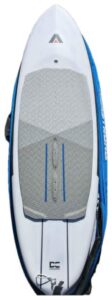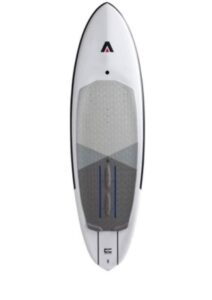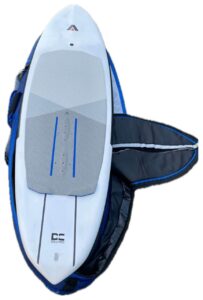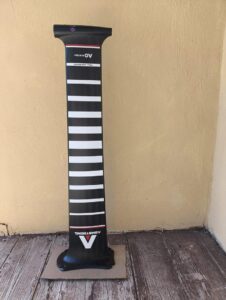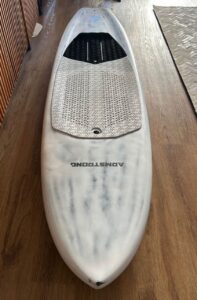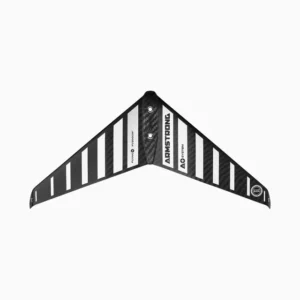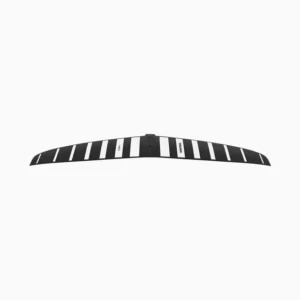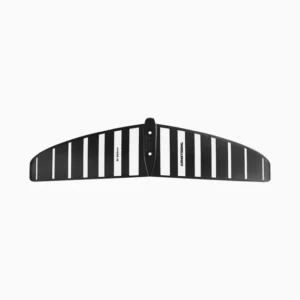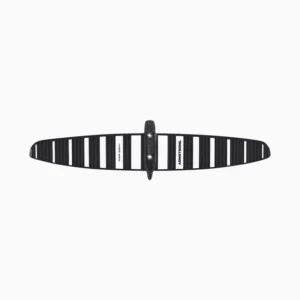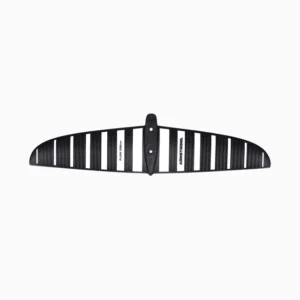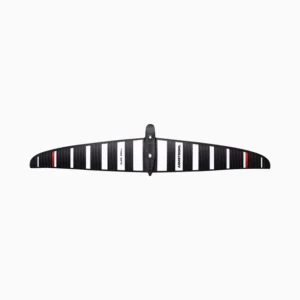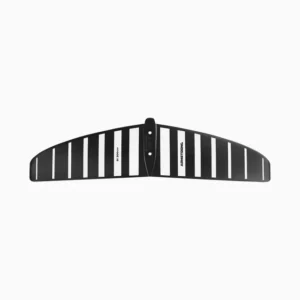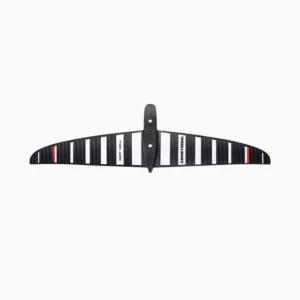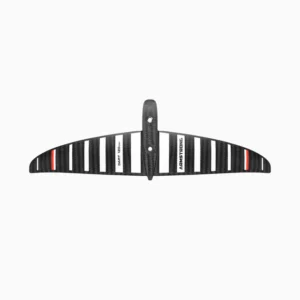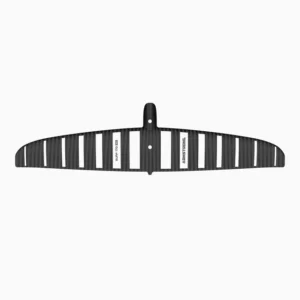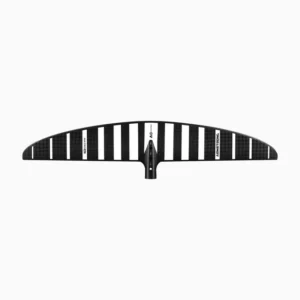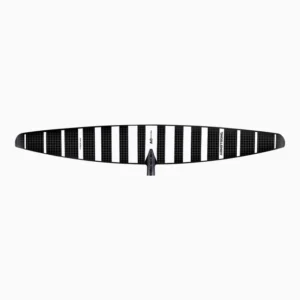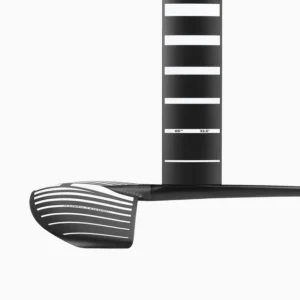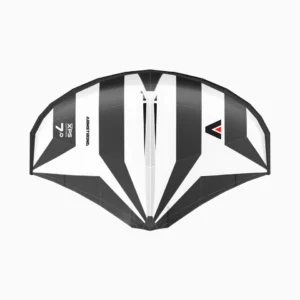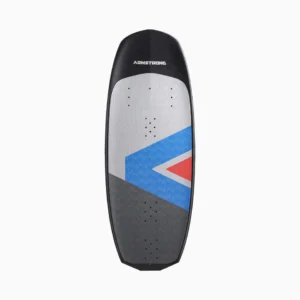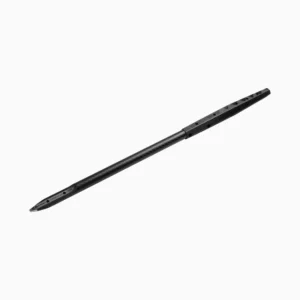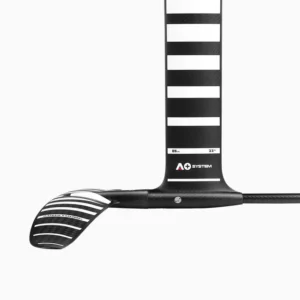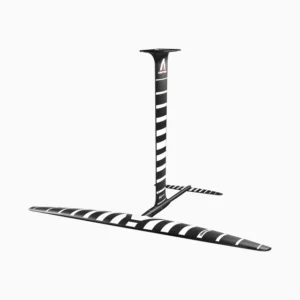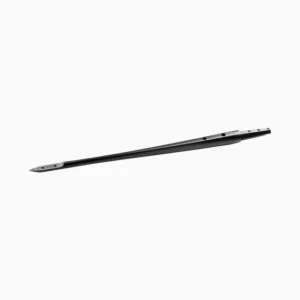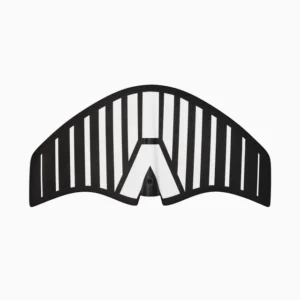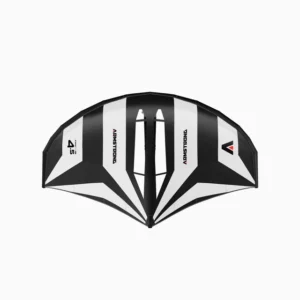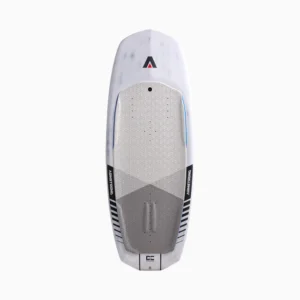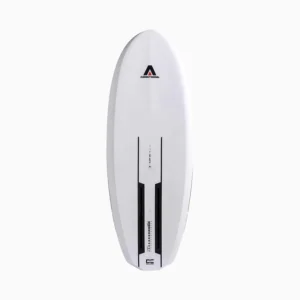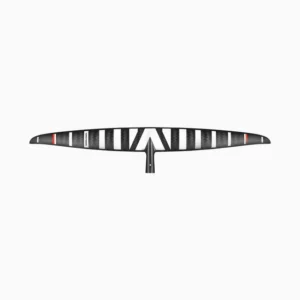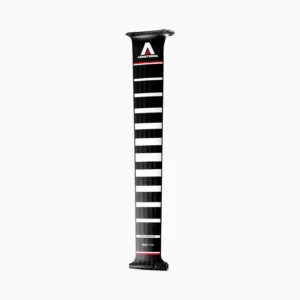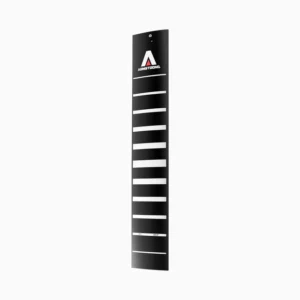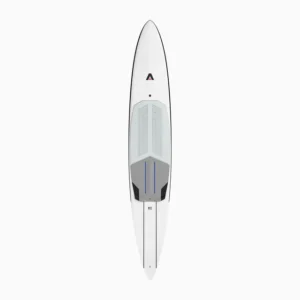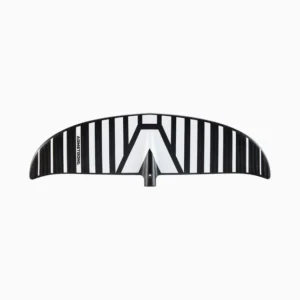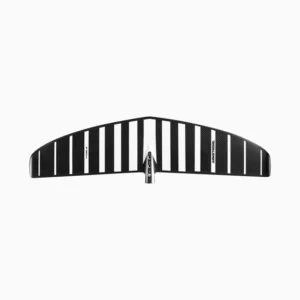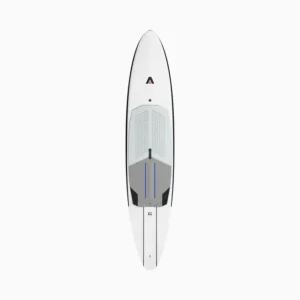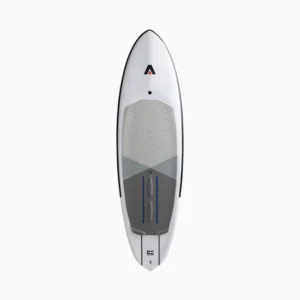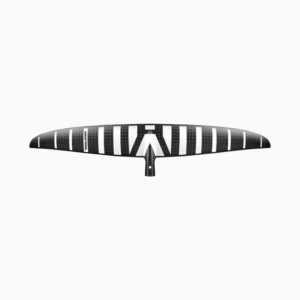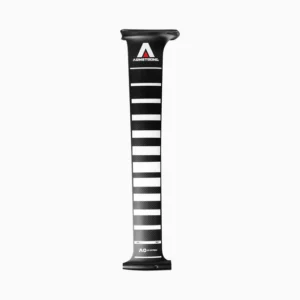Armstrong Downwind Foiling: Elevate Your Experience on the Water
Discover the thrill of Armstrong Downwind Foiling, the cutting-edge way to harness wind and water synergy for a uniquely exhilarating ride. Designed for riders of all levels, Armstrong’s innovative downwind foiling gear delivers unmatched performance, control, and freedom. Whether you are chasing waves, gliding across flat water, or exploring long downwind runs, this gear unlocks a whole new dimension of foiling adventure.
What is Downwind Foiling?
Downwind foiling is an exciting water sport discipline that involves riding a hydrofoil board powered primarily by the wind from behind. Unlike traditional foiling that often focuses on upwind or flat water riding, downwind foiling emphasizes riding waves or swells generated by the wind, creating a dynamic and fluid experience. The hydrofoil lifts the board above the water surface, drastically reducing drag and allowing for smooth, fast, and sustained rides over long distances.
How Armstrong Enhances Your Downwind Foiling Journey
Armstrong’s expertise in foil technology translates into gear meticulously engineered for maximum efficiency, stability, and responsiveness in downwind conditions. Each product in the Armstrong Downwind Foiling range incorporates lightweight, durable materials combined with hydrodynamic designs to optimize lift and control.
Key Features of Armstrong Downwind Foiling Gear
Armstrong’s dedication to quality and innovation is evident in every element of their downwind foiling equipment. Here are some of the standout features:
High-Performance Hydrofoil Wings: Expertly shaped wings provide superior lift, enabling effortless glide and control.
Lightweight Carbon Construction: Using premium carbon fiber composites, the gear remains strong yet ultra-light, improving maneuverability.
Adjustable Mast and Fuselage: Tailor the setup to your preferred ride style and water conditions.
Ergonomic Board Designs: Offering enhanced stability without sacrificing agility for all skill levels.
Corrosion-Resistant Components: Engineered for longevity in saltwater environments.
Streamlined Assembly: Quick and easy setup means more time foiling and less time prepping.
Versatility: Ideal for both wave riding and flat water downwind runs.
Why Choose Armstrong Downwind Foiling?
From beginners stepping into the world of foiling to seasoned riders pushing their limits, Armstrong’s downwind foiling products cater to all. The brand’s innovation stems from decades of research and rider feedback, focusing on delivering reliable and exhilarating experiences.
Armstrong Downwind Foiling Product Range Overview
Hydrofoil Wings
Armstrong’s hydrofoil wings feature an advanced design that balances lift and speed. The wings are optimized to provide early takeoff and smooth carving on waves. Different sizes and profiles allow riders to customize according to their weight, skill, and preferred riding style.
Foil Masts and Fuselages
Strong yet lightweight masts, paired with precision-engineered fuselages, form the backbone of Armstrong’s downwind foiling setup. The components ensure structural integrity, smooth handling, and easy adjustability.
Boards
Armstrong offers a selection of boards designed explicitly for downwind foiling. These boards provide the ideal balance of buoyancy, stability, and agility to maximize your performance and enjoyment on various water conditions.
Benefits of Armstrong Downwind Foiling
Enhanced Speed and Efficiency: Glide faster and further with reduced water resistance.
Smooth Ride Over Waves: Feel the water beneath you as the foil lifts you effortlessly.
Increased Control and Stability: Precisely engineered gear ensures predictable and safe handling.
Lightweight and Durable: Materials chosen for long-lasting performance and easy transport.
Adaptable to Multiple Conditions: Whether ocean swells or flat water, Armstrong gear performs consistently.
Empowers Riders of All Levels: Designed with inclusivity to welcome newcomers and challenge experts.
Armstrong Downwind Foiling Experience: What to Expect
You will immediately notice how Armstrong’s downwind foiling gear transforms your water sessions. The hydrofoil’s lift makes paddling easier, and once you catch the wind, the acceleration is smooth yet exhilarating. Riders report feeling a deep connection with the water and wind, unlocking a new appreciation for nature’s power.
Technical Specifications: Armstrong Downwind Foiling Gear
Hydrofoil Wing Dimensions
| Model | Wingspan (cm) | Surface Area (cm²) | Suitable Rider Weight (kg) |
|---|---|---|---|
| Armstrong Wave 1 | 70 | 800 | 50 – 75 |
| Armstrong Glide 2 | 90 | 1100 | 70 – 95 |
| Armstrong Speed 3 | 110 | 1350 | 90+ |
Mast and Fuselage Materials
Mast: High-modulus carbon fiber, 90 cm length standard, customizable length options available.
Fuselage: Aircraft-grade aluminum with anodized finish for saltwater resistance.
Boards
Sizes: 5’6” to 7’0” lengths
Construction: EPS foam core with epoxy resin, carbon fiber reinforcement
Features: Deck traction pads, multiple leash attachment points
How to Get Started with Armstrong Downwind Foiling
Step 1: Choose the Right Gear
Selecting the appropriate wing size, mast length, and board dimensions is crucial. Armstrong’s experts can guide you based on your experience, weight, and the waters you plan to ride.
Step 2: Learn the Basics
Familiarize yourself with foil assembly, safety procedures, and fundamental riding techniques. Armstrong offers tutorials, videos, and community support to help you progress confidently.
Step 3: Practice and Progress
Start in calm conditions with smaller wings and shorter boards. Gradually challenge yourself with larger waves and longer downwind runs as your skills develop.
Step 4: Join the Armstrong Community
Connect with other riders, share tips, and stay updated on the latest innovations and events.
Armstrong Downwind Foiling Maintenance Tips
Proper care prolongs your gear’s life and performance. Always rinse your foil and board with fresh water after each session. Inspect components regularly for wear and tighten all screws securely. Store in a cool, dry place away from direct sunlight.
Customer Testimonials
“Switching to Armstrong Downwind Foiling changed everything. The gear is light, responsive, and gives me confidence on every ride.” — Alex M.
“As a beginner, I appreciated the support and quality of Armstrong products. Now, I can keep up with my advanced friends on long downwind runs.” — Jamie L.
Frequently Asked Questions (FAQ)
Q: Is Armstrong Downwind Foiling suitable for beginners?
A: Absolutely. Armstrong designs gear with all skill levels in mind and offers helpful resources to support new riders.
Q: Can I use Armstrong gear in both saltwater and freshwater?
A: Yes, the materials and coatings used resist corrosion and perform well in various water types.
Q: How do I know what wing size to choose?
A: Wing size depends on rider weight, skill, and riding style. Armstrong provides detailed size guides and expert advice.
Armstrong Downwind Foiling Product Highlights
High-lift hydrofoil wings with smooth acceleration
Lightweight carbon fiber construction
Adjustable mast and fuselage for customized setups
Durable, corrosion-resistant materials built for longevity
Ergonomic boards designed for stability and maneuverability
Quick assembly and maintenance for effortless use
Supportive community and instructional resources
Armstrong Downwind Foiling: In-Depth Technical Insights
To truly appreciate the performance of Armstrong Downwind Foiling equipment, understanding the technology behind each component is essential. Every detail, from the foil’s shape to the board’s construction, is meticulously engineered to elevate your experience on the water.
Advanced Hydrofoil Wing Design
The Science of Lift and Drag
At the core of Armstrong’s hydrofoil technology lies the wing design. The wings generate lift by redirecting water flow, allowing the board to rise above the surface. Armstrong’s engineers utilize computational fluid dynamics (CFD) and real-world testing to create wings with an optimized balance between lift and drag.
Different wing profiles cater to various riding conditions:
High-lift wings provide easier takeoff and stability at lower speeds, ideal for beginners and cruising long downwind runs.
Low-drag wings focus on speed and agility, favored by advanced riders targeting fast carving and wave riding.
Materials and Construction
Constructed from aerospace-grade carbon fiber composites, Armstrong wings are lightweight yet exceptionally strong. This choice of material minimizes flex and maximizes responsiveness, allowing riders to feel every nuance of the water beneath them.
To enhance durability, the wings feature a protective resin coating that guards against scratches, impacts, and UV damage without compromising performance.
Mast and Fuselage Innovation
The mast connects the wing to the board and must withstand substantial forces during foiling maneuvers. Armstrong’s masts feature a high modulus carbon fiber layup, providing superior stiffness while keeping weight low. A stiff mast improves control and reduces energy loss, translating into a more efficient ride.
Fuselages, crafted from anodized aircraft-grade aluminum, provide a strong yet lightweight backbone. The fuselage design supports smooth hydrodynamic flow and houses secure mounting points for wings and the mast.
Board Design Tailored for Downwind Foiling
Armstrong’s boards combine stability and maneuverability with advanced construction methods. The EPS foam core reduces overall weight, while the carbon fiber reinforcements improve rigidity and responsiveness.
Special attention is paid to deck ergonomics. Grip pads are strategically placed to ensure secure footing in both wet and dry conditions. Additionally, multiple leash attachment points offer safety and convenience for riders of all levels.
How Armstrong’s Technology Makes a Difference in Downwind Foiling
Technology transforms ordinary equipment into exceptional gear, and Armstrong’s innovation significantly impacts your downwind foiling experience.
Faster Takeoffs
Thanks to the high-lift wing profiles, riders can lift the board out of the water earlier and with less effort. This advantage is crucial in downwind conditions, where maintaining speed and flow can be challenging.
Enhanced Stability
A stiff mast and balanced fuselage ensure that the board remains stable at various speeds and wave sizes. Riders enjoy confidence in their gear, allowing them to push their limits safely.
Superior Control
Precise engineering delivers responsive handling, so turning, carving, and adjusting speed feels intuitive. Whether you are navigating gentle swells or more aggressive waves, Armstrong gear keeps you connected.
Lightweight Setup
Reducing weight across all components makes it easier to carry, launch, and maneuver your foil setup. This benefit encourages longer sessions and less fatigue.
Durability for All Conditions
Corrosion-resistant materials and robust construction mean Armstrong gear stands up to saltwater, sun exposure, and regular use, providing reliable performance season after season.
Armstrong Downwind Foiling User Guide
Getting the most from your Armstrong Downwind Foiling equipment involves understanding setup, safety, and technique.
Assembling Your Foil Setup
Attach the Fuselage to the Mast: Align mounting holes carefully and tighten with recommended torque settings.
Mount the Front Wing: Secure the wing to the fuselage using supplied hardware, double-checking tightness.
Choose Your Board: Select a board size that matches your weight and riding goals.
Attach the Mast to the Board: Position the mast plate on the board and securely fasten.
Final Inspection: Confirm all screws and fittings are tightened; perform a quick operational test.
Safety Tips
Always wear a personal flotation device and helmet.
Use a leash attached to the board.
Check weather and water conditions before going out.
Start in calm waters before progressing to waves.
Practice falling safely away from your foil.
Riding Techniques for Downwind Foiling
Starting Off
Begin by paddling to catch initial speed. Once you feel lift, gradually stand and shift your weight to maintain balance.
Riding Waves
Use your legs and body to absorb wave motion. Engage the foil by adjusting pressure to maintain lift without stalling.
Carving Turns
Lean into the turn with controlled weight shifts. Use the foil’s responsiveness to glide through curves smoothly.
Handling Downwind Runs
Plan your route to ride the swell generated by the wind. Maintain steady speed and relax your body to enjoy long rides.
Armstrong Downwind Foiling: Maintenance and Care
Proper maintenance ensures your Armstrong Downwind Foiling gear remains in peak condition, maximizing performance and extending its lifespan. Taking a few simple steps after every session can prevent damage and keep your equipment ready for the water.
Daily Care Routine
Rinse with Fresh Water: After each session, rinse your foil, mast, fuselage, and board thoroughly with fresh water. This removes salt, sand, and debris that can corrode or degrade materials.
Inspect Hardware: Check all screws, bolts, and fittings for tightness. Vibrations and impacts during riding may loosen components over time.
Dry Properly: Allow your gear to dry completely before storing it to prevent mold and corrosion.
Check for Damage: Look for cracks, scratches, or dents in wings and mast. Small damages should be addressed promptly to avoid worsening.
Long-Term Care Tips
Store in a Cool, Dry Place: Avoid prolonged exposure to direct sunlight and extreme temperatures. UV rays can weaken materials and degrade finishes.
Use Protective Bags: Transport and store your foil and board in padded bags to prevent accidental impacts during travel.
Lubricate Moving Parts: Occasionally apply a corrosion-resistant lubricant to metal joints and screws.
Professional Servicing: Schedule annual inspections with certified Armstrong service centers to maintain optimal functionality.
Troubleshooting Common Issues
Loose Fittings: Re-tighten bolts using a torque wrench to manufacturer specifications.
Surface Scratches: Light scratches on carbon fiber wings can be repaired with resin kits available through Armstrong.
Corrosion Signs: Clean affected areas immediately and apply protective coatings recommended by Armstrong.
Armstrong Downwind Foiling: How It Stands Out from Competitors
In the competitive world of downwind foiling gear, Armstrong has carved a niche by focusing on quality, innovation, and user experience. Below, we highlight key differentiators that set Armstrong apart.
Superior Material Quality
While many brands use standard composites, Armstrong’s commitment to aerospace-grade carbon fiber and marine-grade aluminum results in lighter, stiffer, and more durable gear. This material choice directly enhances ride quality and longevity.
Precision Engineering
Armstrong’s design process integrates advanced computational modeling and real-world testing. This thorough approach ensures wings, masts, and boards deliver consistent performance across various conditions — a benefit that casual and professional riders value.
Customization Options
Unlike some competitors offering one-size-fits-all solutions, Armstrong provides a range of sizes and adjustable components. Riders can tailor their setups precisely to weight, skill, and preferred riding style, increasing comfort and control.
User-Friendly Assembly
The quick-assembly design saves time and reduces hassle, a feature often overlooked in other brands. Armstrong’s hardware and instructions prioritize ease of use, even for newcomers to foiling.
Community and Support
Armstrong fosters an inclusive, supportive community of riders worldwide. Through tutorials, forums, and events, users gain access to ongoing education and camaraderie that enrich the foiling experience beyond just equipment.
Pricing and Value
Though premium in build and design, Armstrong maintains competitive pricing relative to the features and benefits offered. Investing in Armstrong gear means long-term reliability and satisfaction without constant upgrades.
Armstrong Downwind Foiling: The Community and Events — Join the Armstrong Tribe
Downwind foiling isn’t just a sport — it’s a lifestyle. Armstrong fosters a vibrant, inclusive community that brings together riders of all backgrounds, skill levels, and ambitions. Beyond the gear, the Armstrong Tribe connects people through shared passion, knowledge, and adventure.
Meet the Riders: Real Stories, Real Connections
Emma’s Journey: From Beginner to Confident Foiler
Emma started with Armstrong Downwind Foiling gear last year. As a beginner with minimal experience, she found the equipment approachable and easy to learn on. “The lightweight setup made a huge difference,” she shares. “I felt confident to push myself because the gear responded so smoothly. The Armstrong community was super welcoming, and their tutorials helped me progress quickly.”
Miguel’s Expedition: Tackling Long Downwind Runs
Experienced rider Miguel takes Armstrong gear on extended downwind journeys along coastal routes. “What I love is the durability and efficiency,” he explains. “The hydrofoil’s design lets me glide for hours with less fatigue. It’s perfect for exploring new spots or training for competitions.”
The Armstrong Tribe Events
The brand organizes meetups, workshops, and foiling festivals worldwide. These gatherings offer chances to demo new gear, learn advanced techniques, and connect with like-minded enthusiasts. Whether you’re looking for advice or camaraderie, Armstrong events foster growth and fun in a supportive environment.
Armstrong Downwind Foiling Buying Guide: Choosing Your Perfect Setup
Selecting the right foil setup can be daunting, especially with the variety of wings, masts, and boards Armstrong offers. This guide breaks down your options to simplify your decision-making and ensure you get gear perfectly suited to your needs.
Choosing the Right Hydrofoil Wing
Armstrong Wave 1 Wing
Surface Area: 800 cm²
Wingspan: 70 cm
Best For: Beginners, light riders, and those prioritizing stability and easy lift
Pros:
Early takeoff with less speed required
Excellent stability for learning and cruising
Lightweight and durable carbon fiber construction
Cons:
Less top-end speed than larger wings
Not ideal for aggressive wave riding or fast carving
Armstrong Glide 2 Wing
Surface Area: 1100 cm²
Wingspan: 90 cm
Best For: Intermediate riders looking for a balance of speed and control
Pros:
Versatile wing suitable for waves and flat water
Responsive handling with good lift
Durable finish for regular use
Cons:
Requires moderate skill to manage in choppy conditions
Slightly heavier than Wave 1 wing
Armstrong Speed 3 Wing
Surface Area: 1350 cm²
Wingspan: 110 cm
Best For: Advanced riders targeting speed, long downwind runs, and high-performance carving
Pros:
High top speed and excellent glide efficiency
Optimized for dynamic wave riding
Reinforced carbon fiber for extra stiffness
Cons:
Less forgiving for beginners
Requires higher speed for takeoff
Selecting the Mast Length
70 cm Mast
Best For: Beginners and riders on flat water
Pros:
Easier control and less leverage in shallow conditions
More stable for learning
Cons:
Limited clearance over waves
90 cm Mast (Standard)
Best For: Most riders and versatile for multiple conditions
Pros:
Balanced height for wave riding and flat water
Good control without sacrificing clearance
Cons:
Slightly less stable than shorter masts for beginners
110 cm Mast
Best For: Advanced riders tackling large waves and rough conditions
Pros:
Maximum clearance for deep carving and big waves
Improved maneuverability at speed
Cons:
Increased leverage can be challenging to control for novices
Board Recommendations
5’6” Board
Best For: Lightweight riders and those prioritizing maneuverability
Pros:
Agile and easy to handle
Perfect for quick turns and wave riding
Cons:
Less stability for beginners or heavier riders
6’4” Board
Best For: Most riders seeking a balance of stability and control
Pros:
Suitable for a wide range of weights and skill levels
Good flotation and easy to carry
Cons:
Slightly heavier to transport
7’0” Board
Best For: Beginners, heavier riders, and long downwind runs
Pros:
Maximum stability and buoyancy
Easier to paddle and launch
Cons:
Less responsive for tight maneuvers
How to Combine Components for Your Riding Style
| Rider Profile | Recommended Wing | Mast Length | Board Size |
|---|---|---|---|
| Beginner / Light Weight | Wave 1 | 70 cm | 7’0” |
| Intermediate / Versatile | Glide 2 | 90 cm | 6’4” |
| Advanced / Speed & Agility | Speed 3 | 110 cm | 5’6” |
This guide helps you tailor your Armstrong Downwind Foiling gear to your unique preferences and conditions, ensuring an optimal experience on every ride.
Armstrong Downwind Foiling: Advanced Riding Tips and Techniques
Once you’ve mastered the basics, Armstrong Downwind Foiling gear offers the precision and freedom to push your skills further. Let’s explore advanced techniques that can transform your rides from smooth to spectacular.
Mastering Pumping
Pumping allows you to generate extra speed and maintain foil flight even through low-energy sections of swell. Armstrong wings, with their responsive profiles, make this easier.
Technique: Use a coordinated rhythm of leg compression and extension, much like a skateboard pump. Keep your upper body stable while driving power from your lower body.
Pro Tip: Visualize “squashing” the board down, then releasing it upward — repeating in a smooth motion without jerky movements.
Linking Multiple Waves
Downwind foiling is often about catching one bump, then linking to the next. Armstrong’s precise wing design makes transitions easier.
Technique: Spot the next wave early. Steer toward it with subtle weight shifts. Maintain enough speed to hop from one swell to the next without stalling.
Pro Tip: Use small rail-to-rail movements rather than hard turns to preserve momentum.
High-Speed Carving
With Armstrong’s carbon construction and stiff mast, you can carve fast and tight turns without wobble.
Technique: Initiate the carve with your front foot while progressively leaning your shoulders. Balance pressure between your toes and heels to guide the foil.
Pro Tip: Look through the turn — where your eyes go, your foil will follow.
Tacking and Jibing
Transitioning across the wind or turning back downwind requires timing and flow.
Technique: Begin with moderate speed. As you enter the turn, shift your weight over the new inside rail while keeping foil pressure steady.
Pro Tip: Practice smaller radius turns first before attempting wide sweeping changes of direction.
Riding Challenging Conditions
When waves grow or the wind picks up, Armstrong’s gear will stay with you — if you apply a calm, confident approach.
Technique: Stay low and centered. Use smaller, faster adjustments rather than large weight shifts. Let the foil do the work.
Pro Tip: The stiffer mast means less wobble, so trust it — avoid over-correcting.
Armstrong Downwind Foiling: Design Philosophy and Manufacturing Deep Dive
Armstrong’s reputation for quality does not happen by accident. Every step in the design and manufacturing journey aims to give riders an edge while ensuring durability, safety, and sustainability.
Performance-Driven Engineering
From the outset, Armstrong’s designers collaborate with riders of all backgrounds to test prototypes in real-world downwind conditions. Engineers use advanced computational modeling alongside on-the-water testing, guaranteeing the final product meets expectations for both casual and performance-focused riders.
Key performance priorities include:
Early lift at low speeds
Predictable, confidence-inspiring handling
Strong acceleration through wave linking
Stability across a wide range of water states
Advanced Materials
Armstrong sources aerospace-grade carbon fiber for maximum strength-to-weight ratio. The carbon layup is carefully placed to achieve consistent flex patterns and maintain performance even under the intense forces of fast carving and pumping.
Fuselages use marine-grade anodized aluminum, offering a corrosion-resistant backbone that withstands constant exposure to saltwater.
Manufacturing Process
Step 1: Prototyping
Engineers and designers build and test multiple wing and mast profiles, refining them until they achieve an ideal blend of lift, speed, and control.
Step 2: Material Layup
Technicians apply precisely calculated layers of carbon fiber, optimizing weight and stiffness in each section of the foil.
Step 3: Finishing
Protective resins and UV-resistant coatings seal the carbon components, improving durability against scratches and impacts.
Step 4: Assembly and Inspection
Every foil undergoes rigorous quality control, including stress tests and component inspections, before it leaves the factory.
Step 5: Field Testing
Professional and amateur riders worldwide receive early units to stress-test them in harsh conditions, feeding back insights for final adjustments.
Sustainability and Responsibility
Armstrong is committed to reducing its environmental impact:
Efficient materials usage to reduce carbon emissions
Long-lasting construction to avoid throwaway replacements
Recyclable packaging for more responsible shipping
Global support network so parts can be repaired rather than replaced
Armstrong Downwind Foiling: The Experience Awaits
When you step onto Armstrong’s gear, you step into a tradition of performance, innovation, and a passion for the ocean. These products aren’t just tools — they are an invitation to join a community, to discover your limits, and to celebrate the magic of water, wind, and flight.
Highlight Recap of Armstrong Downwind Foiling Gear
✅ High-lift carbon hydrofoil wings
✅ Reinforced marine-grade fuselage
✅ Premium carbon-fiber masts for stiffness and control
✅ Ergonomic boards for every skill level
✅ Easy assembly with streamlined design
✅ Supported by a passionate, global foiling community
✅ Sustainably manufactured and responsibly shipped
Armstrong Downwind Foiling: Extended FAQ
Q1: What skill level is Armstrong Downwind Foiling gear suitable for?
Armstrong designs gear for all skill levels. Beginners benefit from stable boards and high-lift wings, while advanced riders appreciate customizable setups and performance-focused components.
Armstrong Downwind Foiling: Real Customer Stories
Hearing from real riders brings the Armstrong downwind foiling experience to life. These authentic stories show how Armstrong empowers everyone — from absolute beginners to fearless experts — to chase their passion on the water.
Emma’s Story: Finding Confidence
Emma, a 33-year-old teacher from Cornwall, had never tried foiling before discovering Armstrong’s downwind gear. She recalls,
“I was terrified of going too fast and crashing. But the Armstrong Wave 1 wing gave me a smooth lift, and the stable 7’0” board was easy to control. I took it slow at first, then found I could link little bumps without falling. I felt supported by the community and safe with the gear. Within a month, I was riding long downwind runs with friends!”
Her story highlights how Armstrong’s user-focused engineering and supportive resources break down barriers for new foilers.
Kofi’s Story: Linking the Impossible
Kofi, a competitive kitefoiler from Ghana, switched to downwind foiling in the off-season to improve endurance. With Armstrong’s Speed 3 wing, he discovered new performance heights:
“It’s wild how efficient the Armstrong setup is. I can link bump after bump without losing speed. The mast is so stiff that I can carve tight turns at full throttle, and the board just stays locked in. It’s a new level of flow.”
Kofi uses Armstrong gear for both recreational and training sessions, praising its durability and precise handling.
Sophie’s Story: Building Community
Sophie, from New Zealand, is a local foiling instructor who organizes community rides and meetups. She chooses Armstrong equipment for all her beginner clinics:
“Armstrong foils are solid and confidence-inspiring. When new riders show up, they see strong, safe gear and it helps them trust the process. And the Armstrong brand itself supports events and community building — that really matters.”
Armstrong Downwind Foiling: Safety and Rescue Guide
Downwind foiling is thrilling, but respecting safety is crucial. Armstrong is committed to inclusive, empowering education so every rider feels confident and prepared.
Pre-Session Checks
✅ Inspect all screws, bolts, and fittings
✅ Check your leash, helmet, and personal flotation device
✅ Confirm weather and water conditions match your skill
✅ Ensure your phone or radio is charged for emergencies
✅ Plan a route with clear exit options
Self-Rescue Basics
Even the best gear can’t stop every challenge. If you get separated from your board or have a failure:
Stay calm, conserve energy
Use your leash to retrieve the board
Paddle prone if you cannot stand
Signal other riders or shore if you need assistance
Emergency Signals
Waving one arm slowly over your head = I need help
Both arms out to the sides = I’m OK
Using a whistle or waterproof radio can also save precious time
Group Ride Safety
When downwinding in a group:
Agree on meeting points and turnaround times
Keep visual contact with other riders
Check in frequently, especially with less experienced riders
Share emergency contact numbers
Respecting Other Water Users
Armstrong encourages responsible sharing of the water:
✅ Give priority to swimmers and paddlers
✅ Avoid crowded surf zones
✅ Keep a respectful distance from wildlife
✅ Follow all local waterway rules
Armstrong Downwind Foiling: Troubleshooting Guide
Even with top-tier gear, riders sometimes face minor issues. Here’s a quick troubleshooting reference:
| Problem | Likely Cause | Solution |
|---|---|---|
| Excessive wing wobble | Loose screws | Check and retighten hardware |
| Poor lift | Too small a wing or wrong angle | Recheck foil size and mast angle |
| Difficulty balancing | Board too short or foil setup too advanced | Try a bigger board or more stable wing |
| Stalling on takeoff | Insufficient speed | Paddle harder, or switch to a higher-lift wing |
| Vibration | Damaged wing or fuselage | Inspect parts and replace if necessary |
Armstrong Downwind Foiling: Customer Highlights Recap
✅ Emma — Built confidence, overcame fear
✅ Kofi — Discovered powerful flow and performance
✅ Sophie — Built community, trusted beginner gear
✅ Consistent praise for safety, simplicity, and versatility
Q2: How do I choose the right wing size?
Wing size depends on your weight, riding style, and typical water conditions. Smaller wings offer agility but require more speed; larger wings provide easier lift at slower speeds. Armstrong’s sizing chart and expert team help you find the best fit.
Q3: Can Armstrong gear be used for other foiling disciplines?
While optimized for downwind foiling, Armstrong hydrofoils and boards are versatile enough for wave riding, pump foiling, and flat water cruising with appropriate configurations.
Q4: How do I transport my Armstrong foil safely?
Use a padded foil bag for wings and fuselage. Boards should be stored in protective covers. When traveling, ensure components are securely packed to avoid impacts.
Q5: What maintenance is required after each session?
Rinse all gear with fresh water, check hardware tightness, and inspect for damage. Store equipment in a dry, shaded place.
Q6: Are instructional materials included?
Yes, Armstrong provides comprehensive guides, tutorial videos, and access to online communities to support riders at every stage.
Q7: How long does it take to learn downwind foiling?
Learning speed varies by individual. With Armstrong’s beginner-friendly gear and resources, most riders achieve basic control within weeks and continue to improve with practice.
Armstrong Downwind Foiling: Downwind Strategy and Weather Planning
Mastering downwind foiling means understanding not only your gear but also the environment. Armstrong encourages riders to develop strong ocean awareness, pairing high-performance gear with smart strategy.
Reading the Forecast
Before hitting the water, check:
✅ Wind direction and strength: True downwind runs work best with steady wind at your back, generally between 10–25 knots depending on skill.
✅ Wave or swell period: Long-period swells are easier to ride and connect than short-period chop.
✅ Tide: Outgoing or incoming tides can affect current, speed, and breaking wave patterns.
✅ Temperature and visibility: Dress accordingly, and make sure you have clear sightlines.
Choosing the Right Line
When planning your downwind run:
Look for a consistent set of bumps running with the wind direction.
Identify safety exits along the coast, in case you need to come ashore.
Plan how you’ll get back to your starting point — shuttle? Bike? Friend pick-up?
Keep a buffer for fatigue: pick a route slightly shorter than your maximum distance.
Wave Linking Strategy
The magic of downwind foiling is linking one bump after another. Armstrong’s foil wings, with their high efficiency and glide, make this easier — if you follow these principles:
Keep scanning 3–4 waves ahead.
Stay centered over the board, with knees flexed to absorb chop.
Aim for the crest of the next wave before your current one fades.
Use small carves to align with the next wave, rather than radical turns.
Staying Flexible
Conditions change. Armstrong riders know to adjust on the fly:
✅ Shift your foot placement forward to accelerate
✅ Move back to control lift if the swell grows steeper
✅ Choose higher bumps for more speed or lower bumps for stability
By blending strong reading of the ocean with Armstrong’s precision-engineered equipment, riders gain an unbeatable advantage.
Armstrong Downwind Foiling: Global Rider Showcase
The Armstrong community is worldwide, filled with people who push limits in their own unique ways. Here are a few inspiring voices.
Satoshi from Japan: Island Hopper
Satoshi foils along the southern Japanese islands, where crystal-clear waters and rolling typhoon swells offer epic downwind conditions.
“Armstrong’s Speed 3 lets me glide over long typhoon-generated swells. The foil is fast enough to keep pace with powerful bumps. I use the 90 cm mast, and it handles chop really well.”
He also trains local youth riders and values Armstrong’s easy assembly for quick session launches.
Lucia from Portugal: Coast Explorer
Lucia rides the rugged Portuguese Atlantic coastline, known for consistent wind and endless downwind routes.
“Armstrong’s carbon wings changed everything. Before, I’d get tired after a few kilometers. Now I can ride twice as far. It’s a sense of freedom I can’t describe.”
She organizes group rides with other women, empowering more female foilers to join the Armstrong tribe.
Rafael from Brazil: River Runner
Rafael uses Armstrong gear in river mouths where tidal bores form rolling, perfect lines.
“The Armstrong Glide 2 is perfect for river bumps. Smooth and easy to carve. It’s tough enough for occasional sandy landings, too.”
He appreciates Armstrong’s robust construction and adjustable setups to handle freshwater and occasional beach landings.
Armstrong Downwind Foiling: Advanced Weather Planning Tips
✅ Learn to read wind shifts during your run, not just before launching
✅ Watch for squalls or storms, which can rapidly change conditions
✅ Use satellite weather apps to check incoming fronts
✅ Coordinate with local coast guards if attempting long coastal crossings
✅ Always log your planned route with a friend or family member
Armstrong Downwind Foiling: Community-Driven Events and Progression
Armstrong’s dedication to community is more than a marketing tagline — it is a lived practice. Across the world, Armstrong supports events that build inclusivity, safety, and skill growth.
Demo Days: Try new Armstrong gear with coaching from ambassadors
Foiling Camps: Week-long immersive sessions with skill workshops and group rides
Competitions: Friendly challenges to push your limits in a supportive environment
Clean-up Rides: Community rides that include ocean clean-ups and environmental stewardship
By investing in these activities, Armstrong keeps its riders connected — and makes sure everyone feels welcome.
Highlight Recap So Far
✅ Global testimonials (Japan, Portugal, Brazil)
✅ Advanced downwind reading and ocean strategy
✅ Community-building events with inclusivity at heart
✅ Safety and rescue reminders woven into the culture
✅ Armstrong’s design backed by real-world input
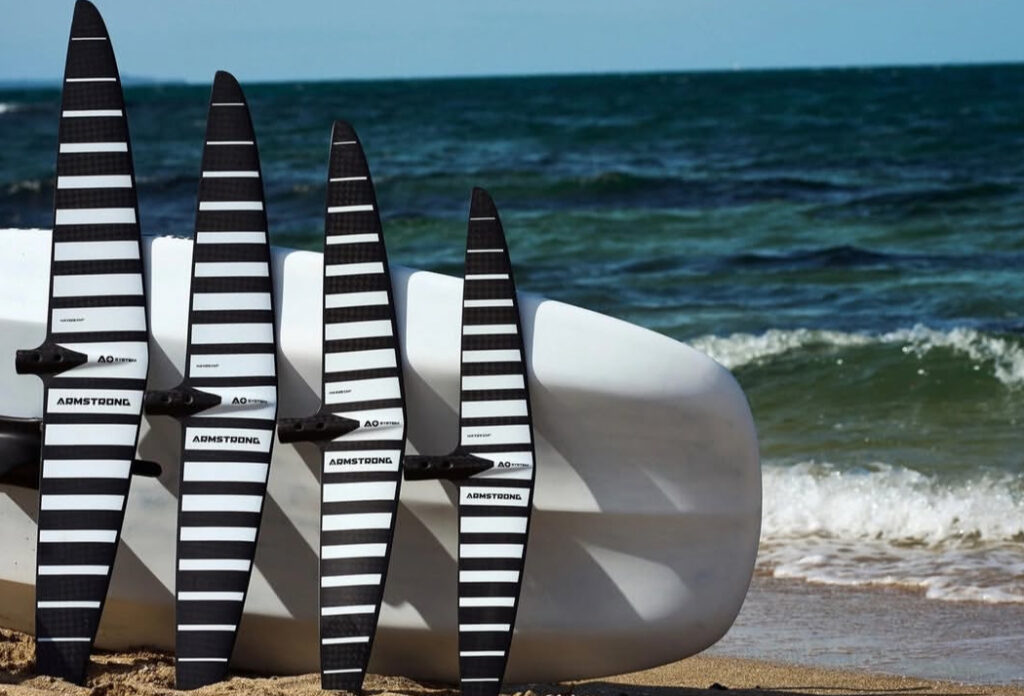
"Delivering the Highest Quality Service—Every Time, Without Compromise."
"Committed to Excellence. Defined by Quality."
At the heart of everything we do lies a simple promise: to uphold the highest standards in service, craftsmanship, and care. Our commitment to excellence drives us to constantly improve, innovate, and exceed expectations. We believe that true quality is not just measured by what we deliver—but by how we deliver it. Every detail matters, because our clients deserve nothing less.
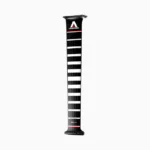
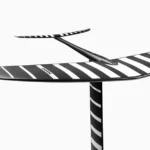
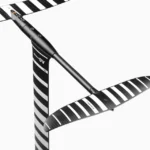

Select options This product has multiple variants. The options may be chosen on the product page
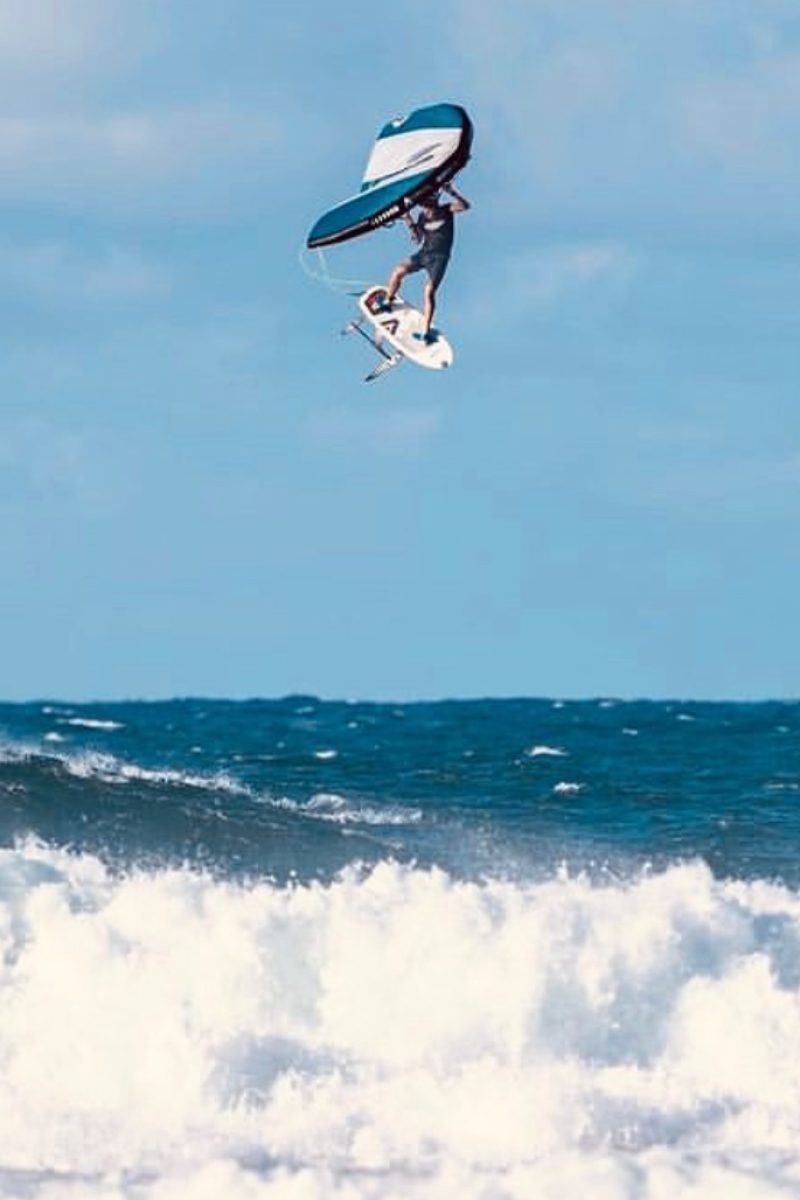
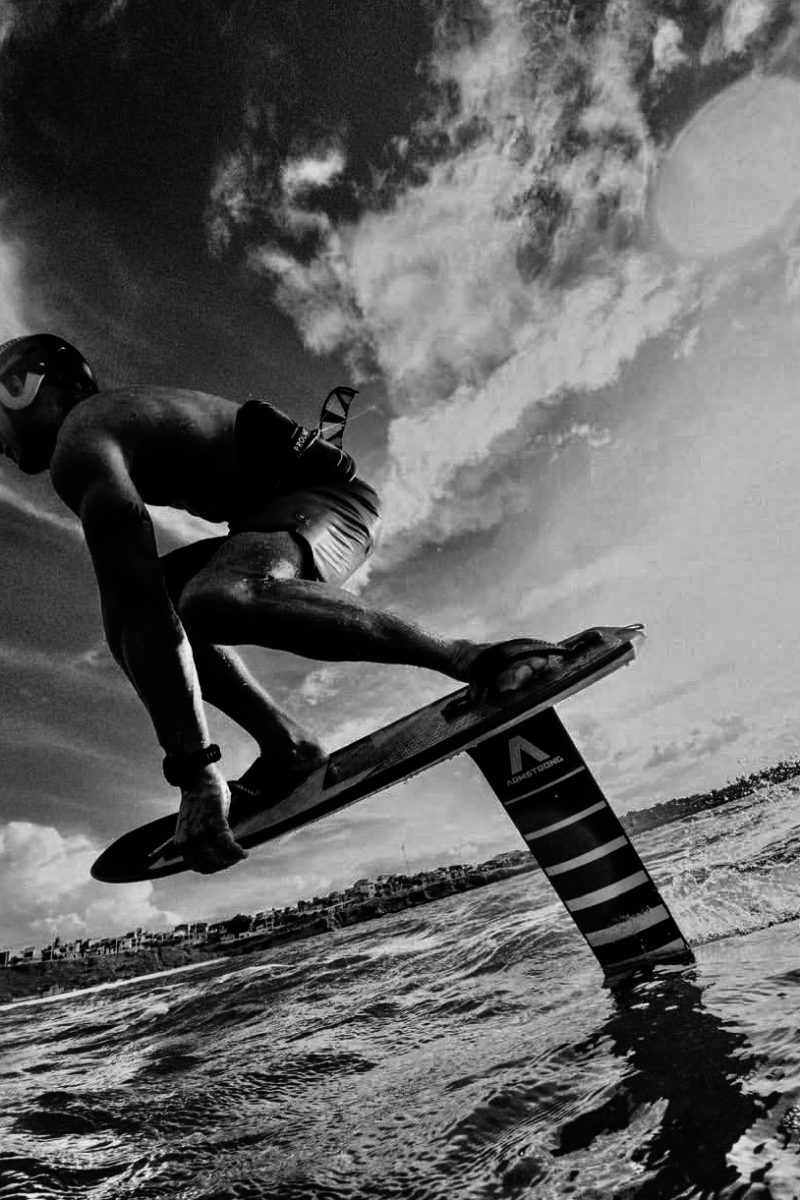
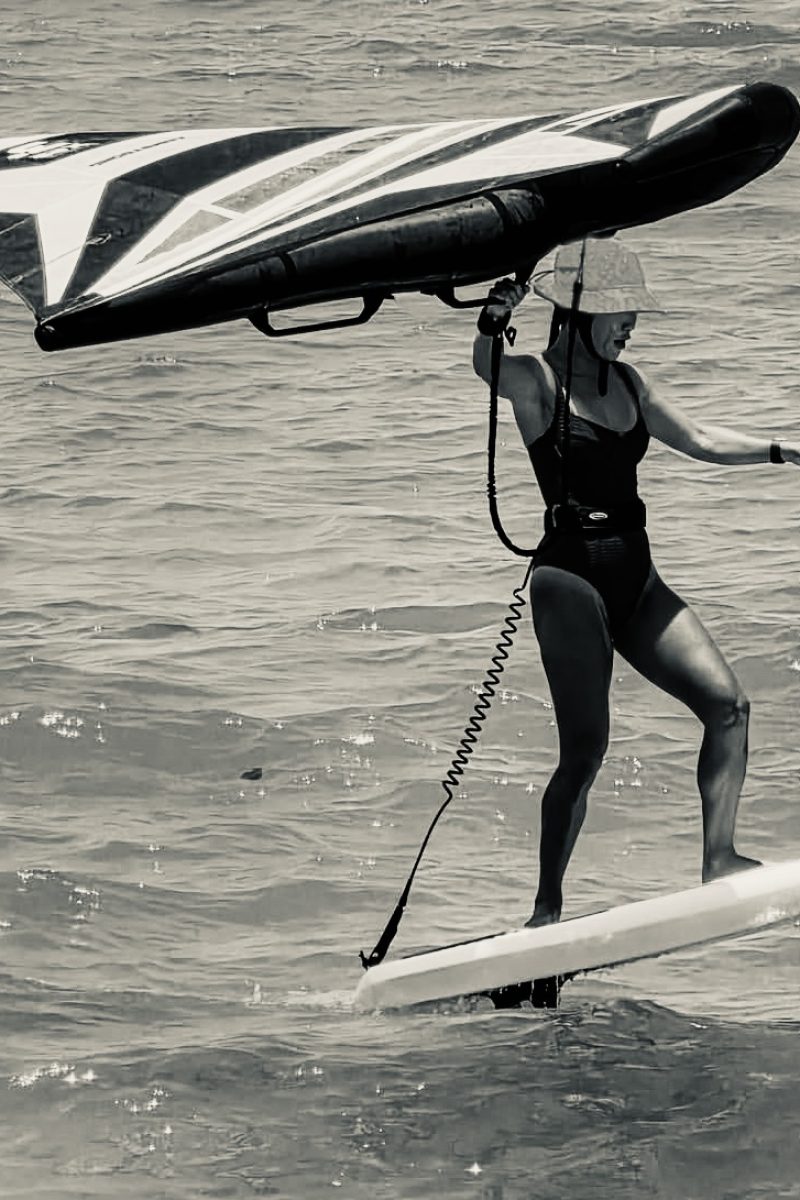
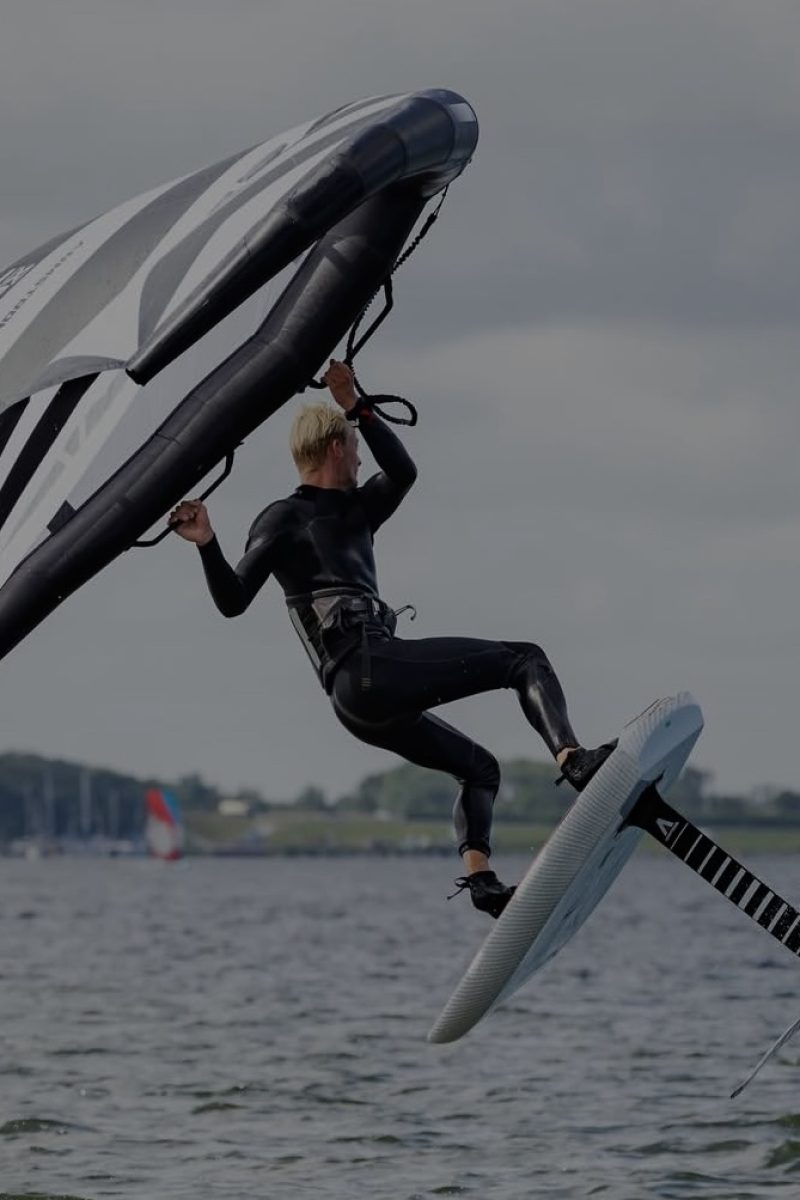
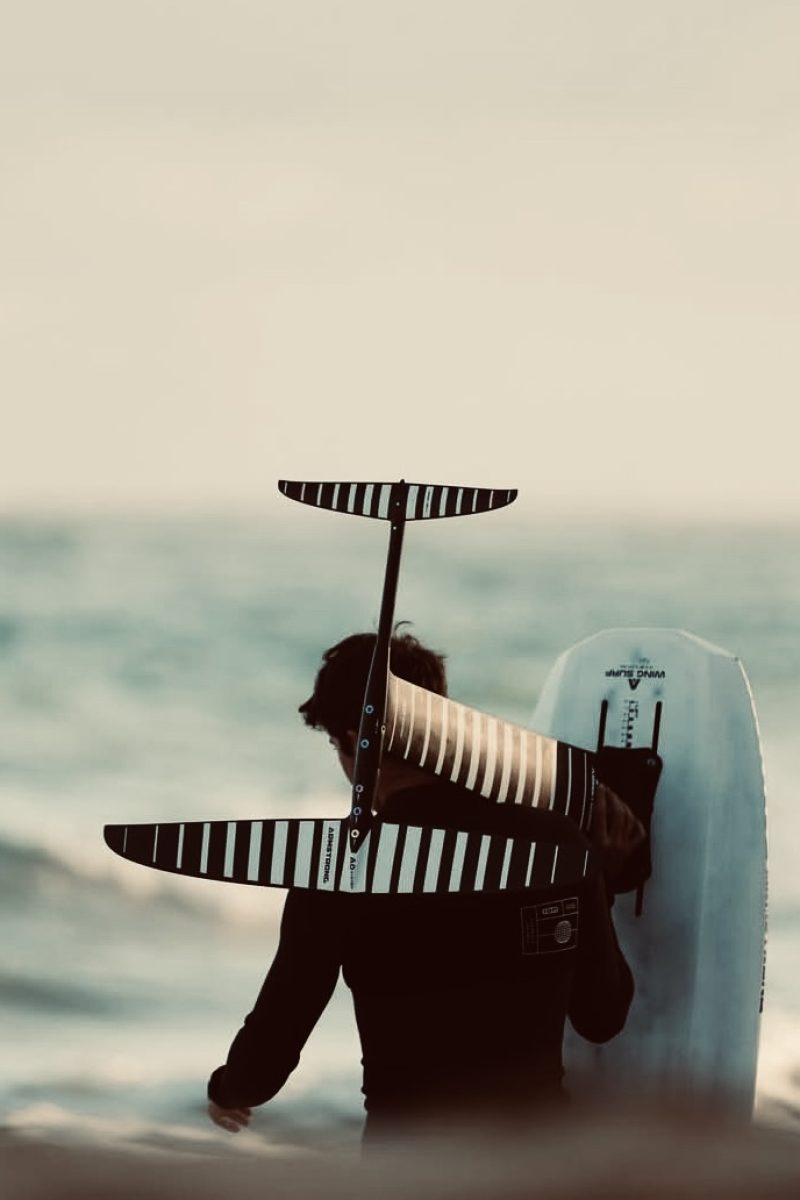
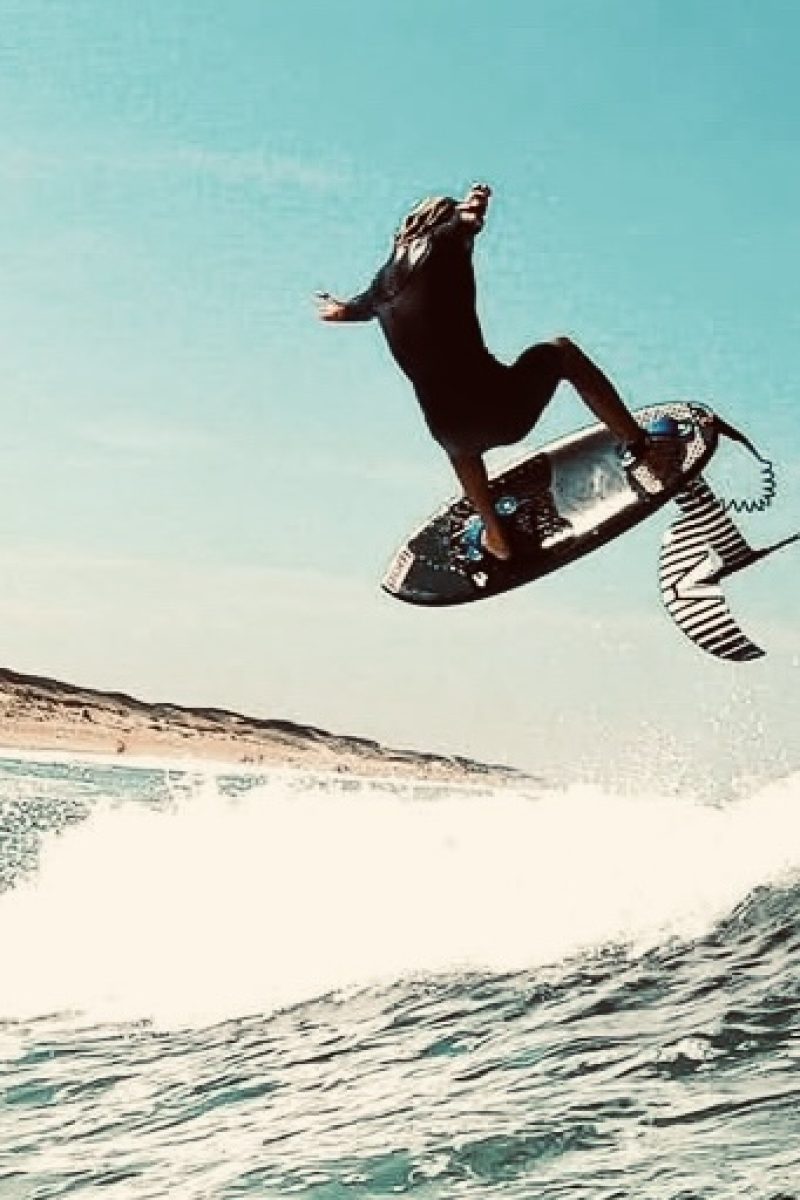
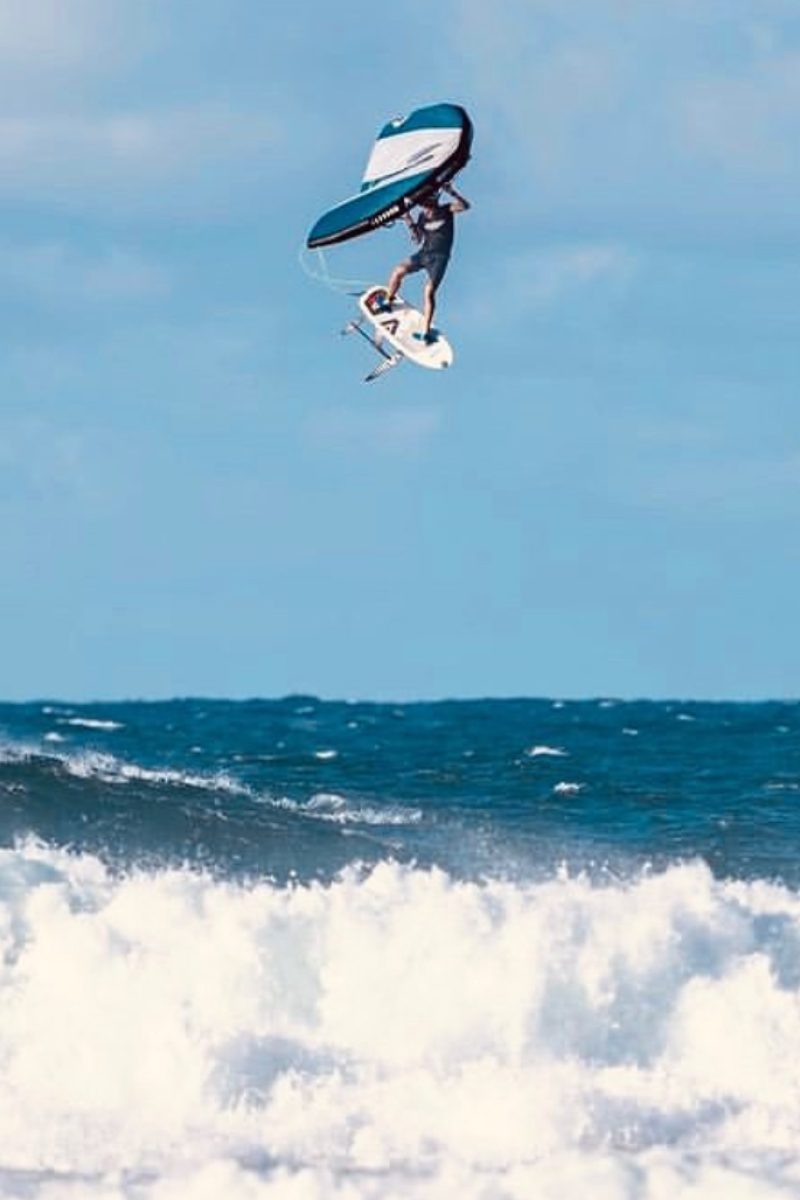
Foiling isn’t just a sport — it’s a lifestyle
t’s about chasing freedom, feeling deeply connected to the water, and moving in perfect harmony with the ocean’s rhythms. Every ride is a chance to push limits, embrace adventure, and share the stoke with a community that understands your passion. This is more than a pastime — it’s a way of life, built on respect for the sea and the thrill of the glide. Welcome to the tribe.

Select options This product has multiple variants. The options may be chosen on the product page
Select options This product has multiple variants. The options may be chosen on the product page
Select options This product has multiple variants. The options may be chosen on the product page
Select options This product has multiple variants. The options may be chosen on the product page
Select options This product has multiple variants. The options may be chosen on the product page
Select options This product has multiple variants. The options may be chosen on the product page
Select options This product has multiple variants. The options may be chosen on the product page
Select options This product has multiple variants. The options may be chosen on the product page
Select options This product has multiple variants. The options may be chosen on the product page
Select options This product has multiple variants. The options may be chosen on the product page
Select options This product has multiple variants. The options may be chosen on the product page
Select options This product has multiple variants. The options may be chosen on the product page
Select options This product has multiple variants. The options may be chosen on the product page
Select options This product has multiple variants. The options may be chosen on the product page
Select options This product has multiple variants. The options may be chosen on the product page
Select options This product has multiple variants. The options may be chosen on the product page
Select options This product has multiple variants. The options may be chosen on the product page
Select options This product has multiple variants. The options may be chosen on the product page
Select options This product has multiple variants. The options may be chosen on the product page
Select options This product has multiple variants. The options may be chosen on the product page
Select options This product has multiple variants. The options may be chosen on the product page
Select options This product has multiple variants. The options may be chosen on the product page


